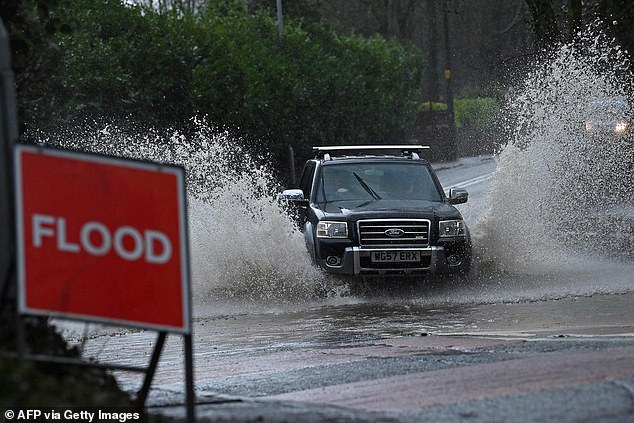Table of Contents
I need to take my daughters to school on a rural road that has a stretch where it regularly floods when it rains a lot. How do I know if it is safe to drive my car through it?
I estimate it reaches about 10 to 20 cm deep when heavily flooded along a 10 to 20 meter stretch of road.
I drive a diesel saloon and I’m worried about the car cutting into the water, so if it seems too deep I turn around and drive the long way around.
In deep water: Whether you can drive through floodwater will depend on the type of car you have, but even 4x4s and high-clearance trucks can get trapped.
However, I see other drivers inching or sometimes speeding through downtown.
How deep must the water be for it to be too deep to drive a normal car through? How important is your type of car? Are electric cars better or worse?
And what is the best technique: should you drive slowly and steadily through the water or quickly through it creating a bow wave? kl
This is Money Motoring reporter Freda Lewis-Stempel responds: Autumn and winter in the UK wouldn’t be complete without a deluge of rain and some flash flooding.
It’s only early October and the Met Office has already issued several heavy rain warnings, with this September being one of the wettest yet for England.
As well as being incredibly depressing, heavy rain and subsequent flooding is dangerous and can wreak havoc on drivers as roads become blocked and cars become stranded.
And, despite the common danger of deep puddles blocking roads, we are not taught the best techniques for driving through rainwater when we learn to drive, or even often given tips on how to do so.
There are many things you should know about this driving scenario you may face, but let’s start with safety.
How deep in water is it safe to drive?
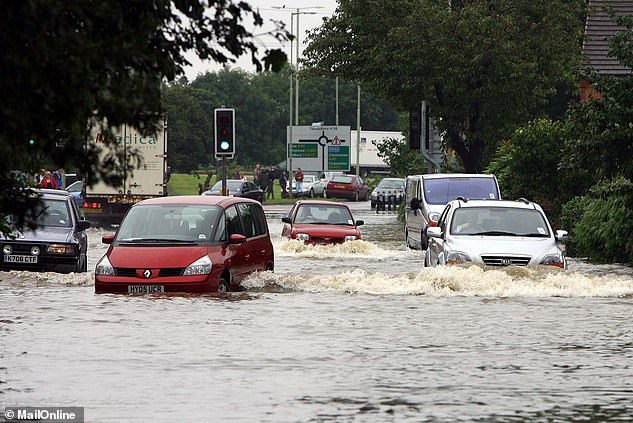
Risky: Cars can easily become stranded in deep water, so as a recommended guide, do not drive in water deeper than 10cm. A car can float with only 30 cm
The general rule is: do not drive through water that is more than 10 cm / 4 inches deep. Just 30 cm, or 1 foot, is considered enough water to float a car. This is a major risk when floodwater flows rather than being a stagnant puddle.
The depth question obviously depends on your specific car, though, and don’t think four-wheel drive means it’s okay; Nowadays, some 4x4s are incredibly low sports SUVs, while agricultural vehicles can have a wading depth of 90cm.
The best visual guide is to see if the water appears to be rising above the door sill or front bumper; If so, do not drive on water.
The problem is that to know for sure you need to dive into the water or take out a ruler and measure.
You could watch other cars go by and try to gauge the depth that way, but the combination of motion and water makes this tricky.
So considering you say you drive a saloon, it’s probably best to err on the side of caution and take the longer route you mentioned, especially if the flooding is 20cm and not 10cm.
Presumably you will be doing this trip over multiple school days or you could even do a round trip and have to return?
Every chance you get will increase your risk of running into difficulty, especially if the water gets deeper and you haven’t realized it. Much of the water from the road will run off from surrounding fields and may continue to accumulate even if it has not rained again.
As for other people doing it and being fine; The answer is the schoolteacher’s infuriating line: “Just because someone else does something doesn’t mean you should.”
Does the type of car matter in the event of a flood? What about electric vehicles?
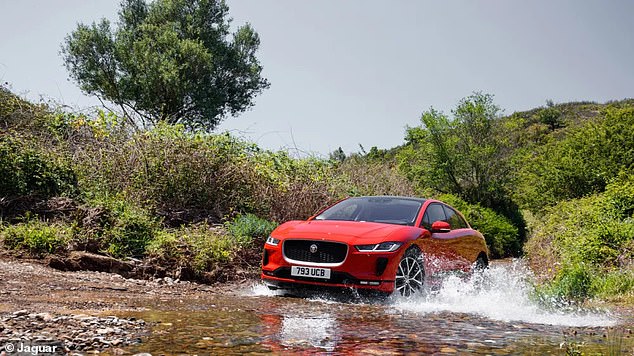
Electric cars: The Jaguar I-Pace (pictured) drives through water, proving that electric vehicles can be just as good, if not better, at driving through water.
We’ve mentioned that 4x4s are generally better equipped and built to cope with flooding, and even the elevated driving style of a standard SUV helps a little, but you say you have a diesel saloon.
This will likely be lower on the road and depending on the make and model, may present a bigger problem.
To save yourself a lot of money on repairs, do not drive a diesel or gasoline car through water unless you are 100% sure that the air intake is above the puddle, because the water can be sucked in and the engine can be damaged. drown. and your car may suffer a hydraulic lock, also known as hydrolock.
Most cars will have the air intake near the front of the hood, at the level of the engine.
If the flood water is deeper than the level of the wheels, or even near the top of the wheels, the movement of the car through it may mean that the water is at risk of reaching this level. This is especially the case if you drive quickly and create a bow wave, as we explain below.
For this reason, fully equipped off-road 4x4s come with a snorkel, which raises the air intake to a high level.
It’s interesting that you ask about electric cars because some argue that electric vehicles are More suitable for driving on water because the engine cannot be flooded through the air intake.
Electric vehicles are also designed with electrically insulated battery packs and insulated power cables, as well as a fail-safe system that will automatically isolate the electric drivetrain components if it gets wet and shorts out.
However, as we said before, it is always advisable not to take risks.
What is the best technique for driving through water?
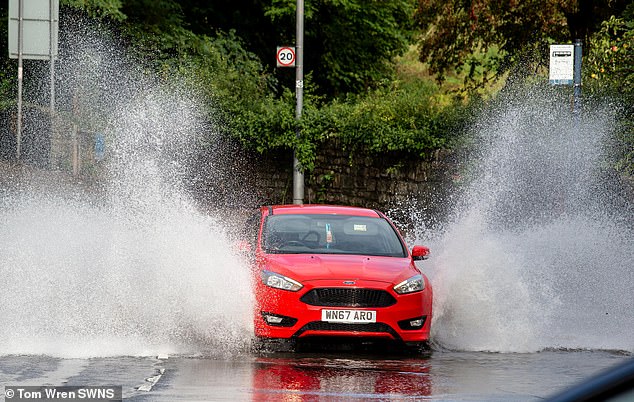
Go it alone: Drive one at a time through the water and keep the revs high, but don’t go over 4 mph – bow waves are NOT your friend.
The contradictions when driving through deep puddles are endless: some say you have to cross them, others advise crawling and crawling.
The most sensible and safest way is to drive at a constant speed of 3 mph or 4 mph through water, according to the AA.
Going at this speed should prevent creating a bow wave (a wave of water at the front of the car), which is not a good idea because water can overwhelm the hood and air intake and flood the engine.
Even shallow puddles should not be hit at high speed, as going too fast can cause hydroplaning.
You also don’t want to go slowly, at very low revs, or stop in a flood, as that creates the possibility of water entering through the exhaust, when the gas pressure is not there.
The AA advises keeping the revs high, keeping the car moving and not stopping.
Avoid the temptation to drive through floodwater in convoy, wait until the car in front has passed before continuing. The same applies to being careful with cars traveling in the opposite direction.
Other cars can create a wave of water that can affect your vehicle. And if you go one at a time, you’ll eliminate the risk of ending up in a slow line or behind a stuck car, which comes with the risk of spending time standing in water.
You mentioned seeing cars driving down the middle, which is usually the right approach since it’s usually the highest point on the road and the water will be the shallowest.
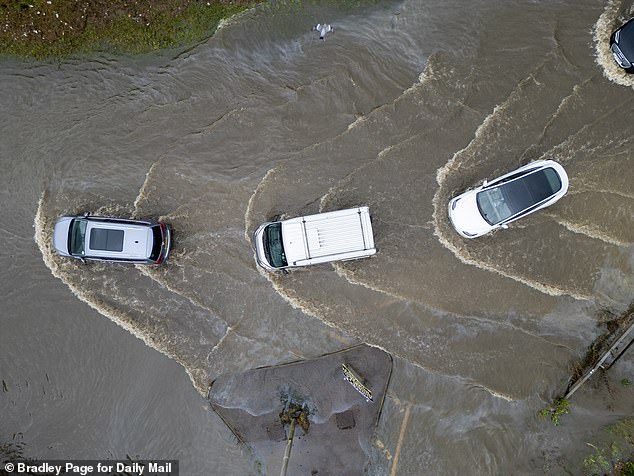
Don’t do this! Driving through water behind other cars is a bad idea, as you can end up in a queue or get stuck behind a stranded car and increase the chance of water getting into your car’s engine.
Anything else to remember about driving in floods?
Always check your brakes after driving on water; A simple brake check can save lives.
If you feel that your brakes are not working properly, do not continue driving and take your car to the garage immediately.
If your car stalls in deep water, do not restart it. Seek help to push the car out of the water or wait for a recovery driver to help get it safely to dry land.
Some links in this article may be affiliate links. If you click on them, we may earn a small commission. That helps us fund This Is Money and keep it free to use. We do not write articles to promote products. We do not allow any commercial relationship to affect our editorial independence.

